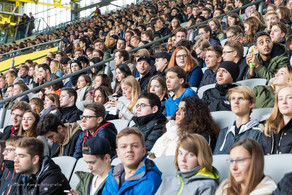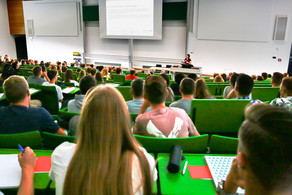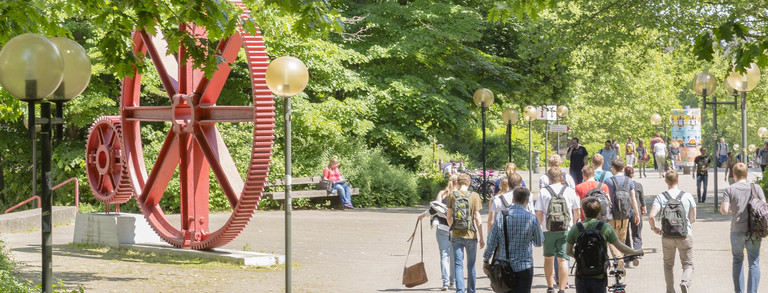Discussion papers SFB 823 in 2012
- 58/12: Holger Dette, Andrey Pepelyshev, Anatoly Zhigljavsky
Design for regression models with correlated errors
- 57/12: Brice Franke, Martin Wendler
Stable limit theorem for U-statistic processes indexed by a random walk
- 56/12: Marc Hallin, Ramon van den Akker, Bas J. M. Werker
Rank-based tests of the cointegrating rank in semiparametric error correction models
- 55/12: Holger Dette, Kirsten Schorning
Complete classes of designs for nonlinear regression models and principal representations of moment spaces
- 54/12: Matthias Arnold, Ludger Linnemann
The aggregate Euler equation and transaction services of government bonds
- 53/12: Benjamin Niestroj
Investors' valuation for asset liquidity and the corporate-treasury yield spread
- 52/12: Christian Bredemeier, Falko Jüßen
Minimum wages and female labor supply in Germany
- 51/12: Klaus Friedrichs, Claus Weihs
Comparing timbre estimation using auditory models with and without hearing loss
- 50/12: Nadja Bauer, Klaus Friedrichs, Dominik Kirchhoff, Julia Schiffner, Claus Weihs
Tone onset detection using an auditory model
- 49/12: Alexei Onatski, Marcelo J. Moreira, Marc Hallin
Signal detection in high dimension: The multispiked case
- 48/12: Siegfried Hörmann, Lukasz Kidzinski, Marc Hallin
Dynamic functional principal components
- 47/12: Claus Weihs, Nils Raabe, Manuel Ferreira, Christian Rautert
Statistical pocess modelling for machining of inhomogeneous mineral subsoil
- 46/12: Herold Dehling, Brice Franke, Thomas Kott, Reg Kulperger
Change point testing for the drift parameters of a periodic mean reversion process
- 45/12: Rafael Gralla, Kornelius Kraft, Stanislav Volgushev
The effects of works councils on overtime hours - a censored quantile regression approach
- 44/12: Matthias Arnold, Nils Raabe, Dominik Wied
Identifying different areas of inhomogeneous mineral subsoil: spatial fluctuation approaches
- 43/12: Stefan Jäschke
Estimation of risk measures in energy portfolios using modern copula techniques
- 42/12: Nadja Bauer, Julia Schiffner, Claus Weihs
Comparison of parameter optimization techniques for a music tone onset detection algorithm
- 41/12: Hendrik Schmitz, Harald Tauchmann
Factor substitution in hospitals: a DEA based approach
- 40/12: Arndt Reichert, Harald Tauchmann
When outcome heterogenously matters for selection: A generalized selection correction estimator
- 39/12: Denis Belomestny, Vladimir Panov
Estimation of the activity of jumps for time-changed Levy processes
- 38/12: Philip Preuß, Mathias Vetter
Discriminating between long-range dependence and non-stationarity
- 37/12: Marc Hallin, Christophe Ley
Skew-symmetric distributions and Fisher information The double sin of the skew-normal
- 36/12: Rafael Gralla, Kornelius Kraft, Julia Lang
Let's call it a day - The effect of works councils on working hours constraints in German establishments
- 35/12: Holger Dette, Stefanie Titoff, Stanislav Volgushev, Frank Bretz
Model identification for dose response signal detection
- 34/12: Stanislav Volgushev, Jens Wagener, Holger Dette
Censored quantile regression processes under dependence and penalization
- 33/12: Samuel Reynard, Andreas Schabert
Monetary policy, interest rates, and liquidity premia
- 32/12: Marc Hallin, Zudi Lu, Davy Paindaveine, Miroslav Siman
Local constant and local bilinear multiple-output quantile regression
- 31/12: Betina Berghaus, Axel Bücher, Holger Dette
Minimum distance estimation of Pickands dependence function for multivariate distributions
- 30/12: Holger Dette, Andrey Pepelyshev, Anatoly Zhigljavsky
'Nearly' universally optimal designs for models with correlated observations
- 29/12: Nikolaus Rudak, Sonja Kuhnt, Birger Hussong, Wolfgang Tillmann
On different strategies for the prediction of coating properties in a HVOF process
- 28/12: Manuel Frondel, Nolan Ritter, Christoph M. Schmidt
Measuring long-term energy supply risks: A G7 ranking
- 27/12: Axel Bücher
A note on nonparametric estimation of bivariate tail dependence
- 26/12: Roland Fried, Inoncent Agueusop, Björn Bornkamp, Konstantinos Fokianos, Jana Fruth, Katja Ickstadt
Bayesian outlier detection in INGARCH time series
- 25/12: Holger Dette, Viatcheslav B. Melas, Petr Shpilev
Robust T-optimal discriminating designs
- 24/12: Alexander Schnurr
An ordinal pattern approach to detect and to model leverage effects and dependence structures between financial time series
- 23/12: Katharina Proksch, Nicolai Bissantz, Holger Dette
Confidence bands for multivariate and time dependent inverse regression models
- 22/12: Christian Bredemeier, Henry Goecke
Sticky prices vs. sticky information: A cross-country study of inflation dynamics
- 21/12: Stanislav Volgushev, Melanie Birke, Holger Dette, Natalie Neumeyer
Significance testing in quantile regression
- 20/12: Holger Dette, Werner G. Müller
Optimal designs for regression models with a constant coefficient of variation
- 19/12: Matthias Arnold, Dominik Wied
Testing for structural change in spatial regions at unknown positions
- 18/12: Rafael Gralla, Kornelius Kraft
Higher wages, overstaffing or both? The employer's assessment of problems regarding wage costs and staff level in codetermined establishments
- 17/12: Martin Wendler, Olimjon Sh. Sharipov
Noncentral limit theorem and the bootstrap for quantiles of dependent data
- 16/12: Axel Bücher, Mathias Vetter
Nonparametric inference on Lévy measures and copulas
- 15/12: Falko Juessen, Ludger Linnemann, Andreas Schabert
Default risk premia on government bonds in a quantitative macroeconomic model
- 14/12: Manuel Frondel, Colin Vance
Asymmetry: Resurrecting the roots
- 13/12: Peter Behl, Gerda Claeskens, Holger Dette
Focused model selection in quantile regression
- 12/12: Dominik Wied, Pedro Galeano
Monitoring correlation change in a sequence of random variables
- 11/12: Christian Bredemeier
Inattentive voters and welfare-state persistence
- 10/12: Nadja Bauer, Julia Schiffner, Claus Weihs
Einfluss der Musikinstrumente auf die Güte der Einsatzzeiterkennung
- 09/12: Gregor N.F. Weiß, Hendrik Supper
Liquidity commonality and risk management
- 08/12: Falko Juessen, Ludger Linnemann
Government spending and unemployment in the OECD: Evidence from an annual panel VAR
- 07/12: Jens Wagener, Stanislav Volgushev, Holger Dette
The quantile process under random censoring
- 06/12: Andre Rehage, Nikolaus Rudak, Birger Hussong, Sonja Kuhnt, Wolfgang Tillmann
Prediction of in-flight particle properties in thermal spraying with additive day-effects
- 05/12: Holger Dette, Christine Kiss
Optimal designs for rational regression models
- 04/12: Holger Dette, Joachim Kunert
Optimal designs for the Michaelis Menten model with correlated observations
- 03/12: Herold Dehling, Olivier Durieu, Marco Tusche
Empirical processes of Markov chains and dynamical systems indexed by classes of functions
- 02/12: Rich Iovanna, Colin Vance
Land conversion and market equilibrium: Insights from a simulated landscape
- 01/12: Manuel Frondel, Colin Vance
On interaction effects: The case of heckit and two-part models






